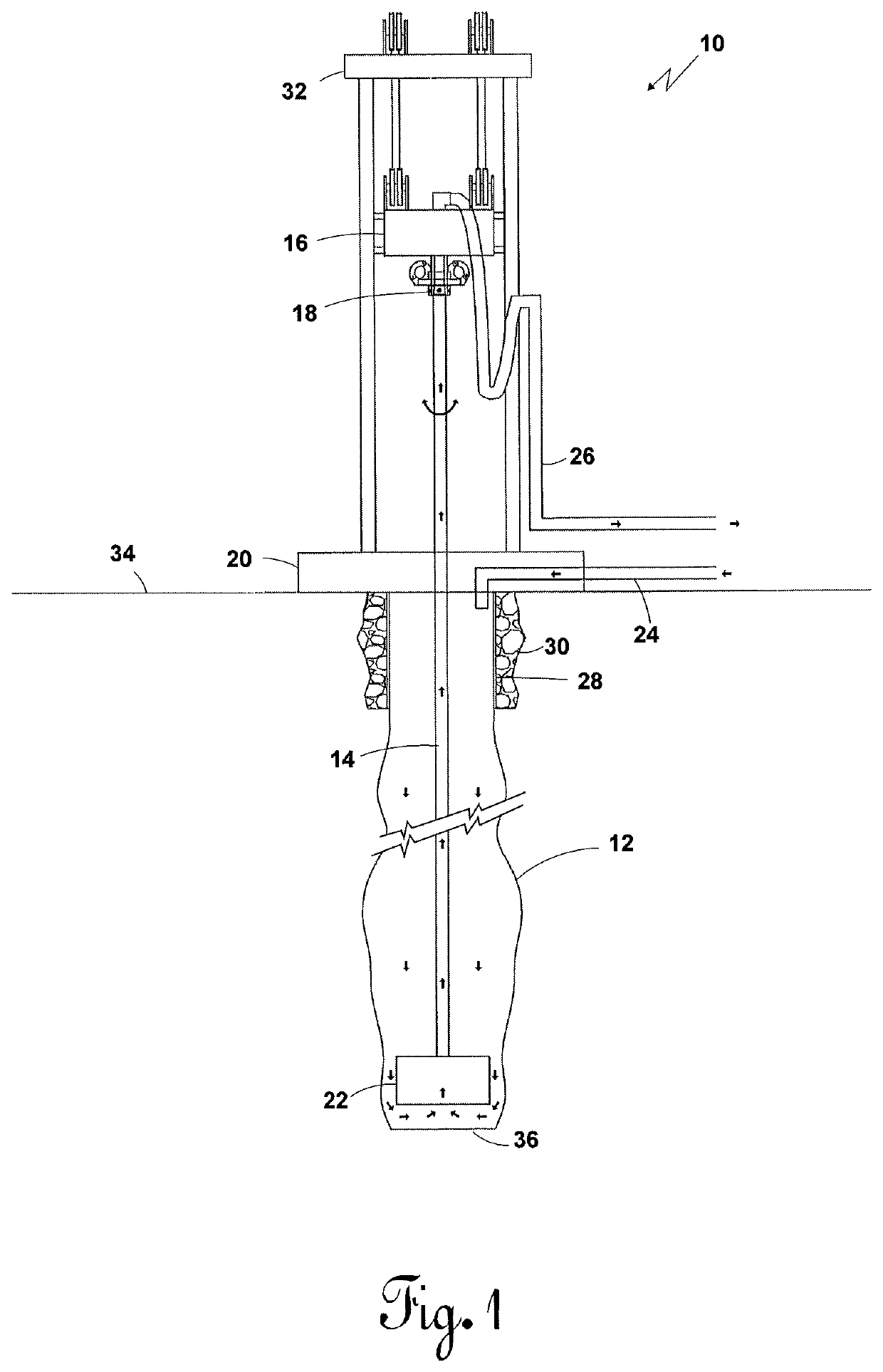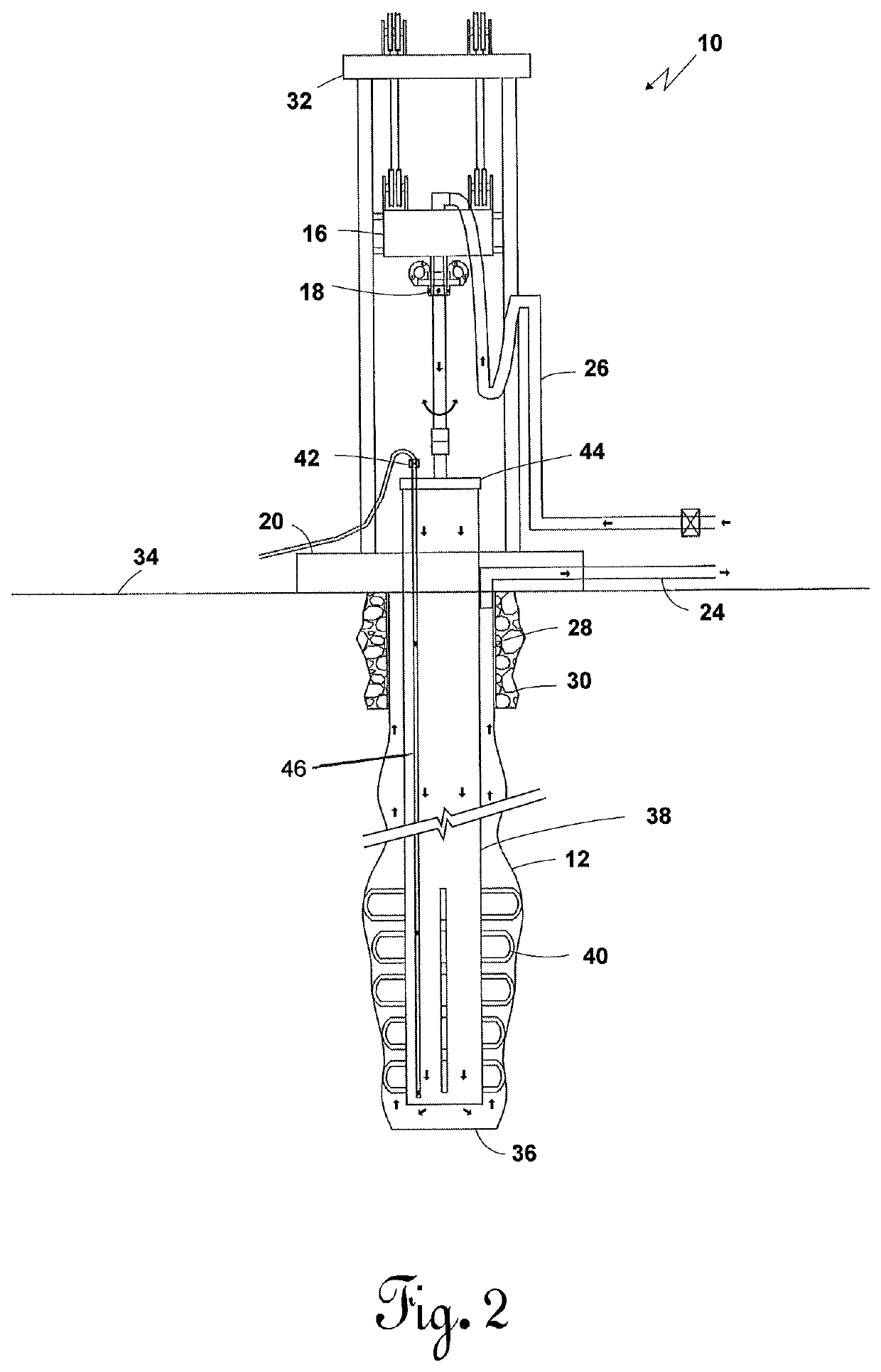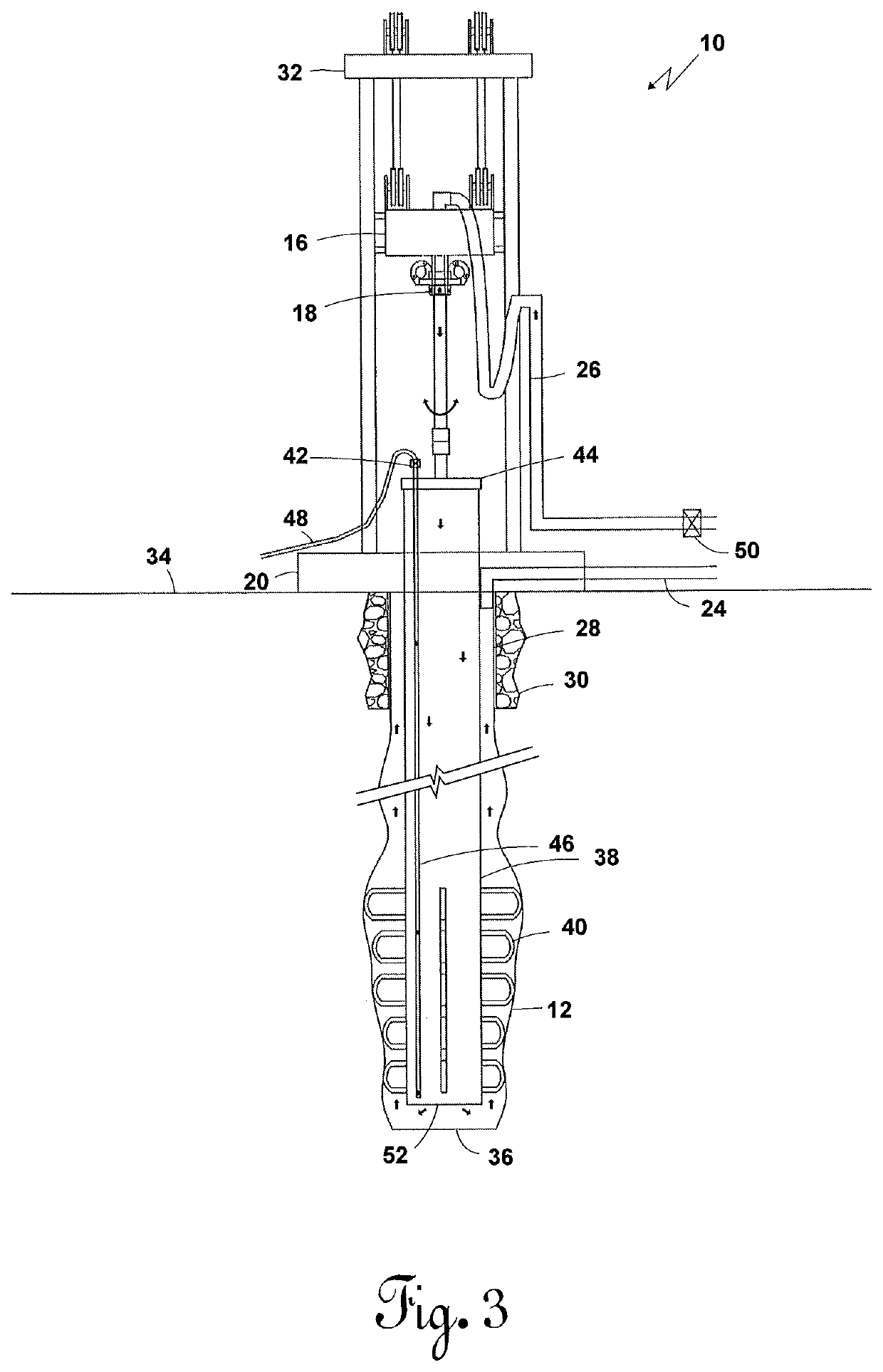Cementing casing in a large diameter mud drilled well
a cementing casing and large-diameter technology, which is applied in the direction of drilling accessories, borehole/well accessories, constructions, etc., can solve the problems of different problems, endanger the underground sources of drinking water, and the mud at the bottom of the well gets in the way, and achieves the effect of higher velocity
- Summary
- Abstract
- Description
- Claims
- Application Information
AI Technical Summary
Benefits of technology
Problems solved by technology
Method used
Image
Examples
Embodiment Construction
[0044]Referring to FIG. 1, a drilling rig 10 is pictorially illustrated above a wellbore 12. The wellbore 12 is for a large diameter waste water disposal well. Such large diameter disposal wells may be about sixty inches in diameter at the top and be reduced down to twenty-four inches in diameter at the bottom. Such large diameter wells can range from 20 inches in diameter to 90 inches in diameter.
[0045]A drill pipe extends down from the top head drive 16 and the drill pipe connection 18 through the drilling floor 20. The top head drive 16 rotates the drilling pipe 14 which has on the lower end thereof a drill bit 22. Because the borehole being drilled has a large diameter (approximately sixty-two inches), the drill bit 22 will be much larger in diameter than the drill pipe 14.
[0046]Drilling mud such as Bentonite flows into the wellbore 12 through drilling mud tubing 24. The drilling mud flows downward in the wellbore 12 in through the drill bit 22, up the drill pipe 14, through dri...
PUM
 Login to View More
Login to View More Abstract
Description
Claims
Application Information
 Login to View More
Login to View More - R&D
- Intellectual Property
- Life Sciences
- Materials
- Tech Scout
- Unparalleled Data Quality
- Higher Quality Content
- 60% Fewer Hallucinations
Browse by: Latest US Patents, China's latest patents, Technical Efficacy Thesaurus, Application Domain, Technology Topic, Popular Technical Reports.
© 2025 PatSnap. All rights reserved.Legal|Privacy policy|Modern Slavery Act Transparency Statement|Sitemap|About US| Contact US: help@patsnap.com



